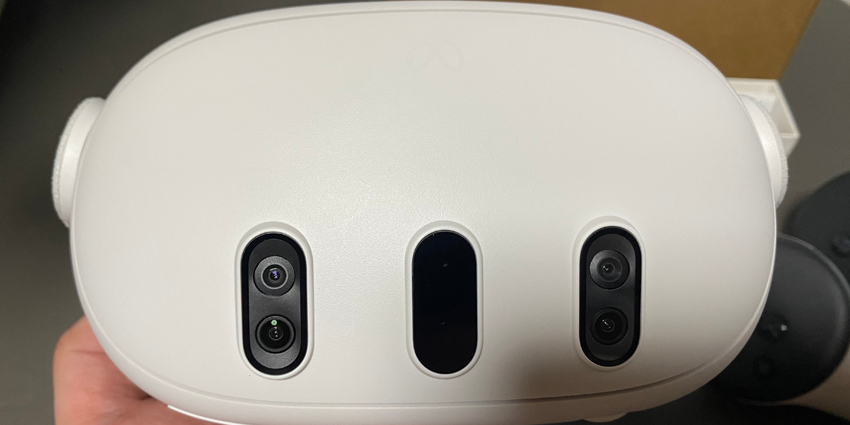This week, Meta released its Quest v68 software update, which introduces a new first-party application for innovative passthrough situations and optimisation of other application processes.
The update improves how augmented visualisations interact and exist in a real-world environment, and the optimisation assists with application management. The rollout started this week, and Quest headset owners will quickly gain the update.
Meta Quest’s New Application
Quest v68 introduces a new utility application called Layout, which allows users to analyse the fine details of real-world objects or spaces as MR data points.
Layout allows Quest users to measure the size, height, and width of objects like kitchen surfaces or stools using the device and its controllers, turning those measurements into spatial data points.
Meta designed the layout application, following similar immersive customer experience innovations from groups like Ikea. It allows users to plan a room layout ahead of a redesign or furniture purchase.
Meta distributes the layout application via the Quest headset’s App Library following the v68 update.
New Rollout Optimisations
Alongside the new Layout application. Meta also optimises the headset’s general performance to improve broad application processes.
One area Quest is optimising is application downloads. According to Meta, the firm is rolling out “behind-the-scenes improvements” that allow users to download multiple games or applications at the same time.
Moreover, the Quest headset development team added a new Downloads user interface tab, allowing users to manage various simultaneous downloads from a unified page.
For businesses, this could prove a valuable tool for downloading various services at once while setting up a Quest device for the workplace—with all the applications that come with onboarding processes.
Interestingly, the new download tools came after Meta removed its App Lab storefront. Starting August 5th, the company will transfer all App Lab applications to the Quest digital storefront. This includes all services currently under development, under review, and completed. Additionally, the company will provide support to application developers transitioning to the Meta Quest digital storefront by offering recommended steps and details about the launch process.
Finally, Meta improved graphic performance by debuting a new frame timing algorithm that reduces latency and stuttering in specific Quest applications. Notably, the improved graphic performance affects OpenXR applications.
Khronos recently updated its OpenXR API to version 1.1 to enhance its support for cross-platform AR/VR/MR application development. This update consolidates multiple extensions into the OpenXR API, simplifying application development cycles by reducing the need for different coding frameworks behind support for various end devices.
The OpenXR API is crucial for many XR headsets from vendors such as Acer, ByteDance, Canon, HTC, Magic Leap, Meta, Microsoft, Sony, XREAL, Qualcomm, Valve, and Varjo. RT3D development services like Autodesk VRED, Blender, Godot, NVIDIA’s Omniverse, StereoKit, Unreal Engine, and Unity support OpenXR integration, leading to seamless OpenXR application usage.







